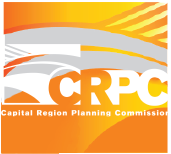Our Vision: Region 7 envisions a future with less flood risk, healthier natural environments, and resilience practices that are responsive to the needs of a communities and to our evolving environment. You can read more about Region 7’s vision, values, and goals in our guiding principles framework.
Following the Great Floods of 2016, Gov. Edwards issued an Executive Order that charged state agencies to coordinate statewide flood risk management efforts through a regional watershed approach, centering decision-making through shared waterways across multiple jurisdictional boundaries. The order identified five state agencies to collaborate on interagency alignment efforts through technical advisory groups, made up of staff from each agency, and the Council on Watershed Management, which oversees all activities associated with the Louisiana Watershed Initiative (LWI). Those agencies are as follows: Coastal Protection and Restoration Authority, Department of Transportation Development, Department of Wildlife and Fisheries, Governor’s Office of Homeland Security and Emergency Preparedness, and the Office of Community Development. Members of the technical advisory groups recommended the eight provisional watershed regions (below) that were then adopted the Council on Watershed Management
Region 7 includes the following parishes: West Feliciana, St Helena, Tangipahoa, Washington, Livingston, St Tammany, St John the Baptist, and St Charles.
Through the implementation of its programs, efforts of the LWI coordinate enhanced technology, planning, policy, and engagement with state agencies, regional partners, and local communities to build support for an improved, long-term, state, and watershed region management framework that can more effectively address mounting flood risks statewide.
On June 29, 2021 the Region 7 Regional Steering Committee adopted the regional governance recommendation. This document can be viewed HERE. The regional governance recommendation outlines activities that the region is recommending should occur. This document is the result of over a year’s worth of meetings with the Regional Steering Committee, an extensive outreach and engagement period that included 24 one-to-one meetings, and 2 workshops.








